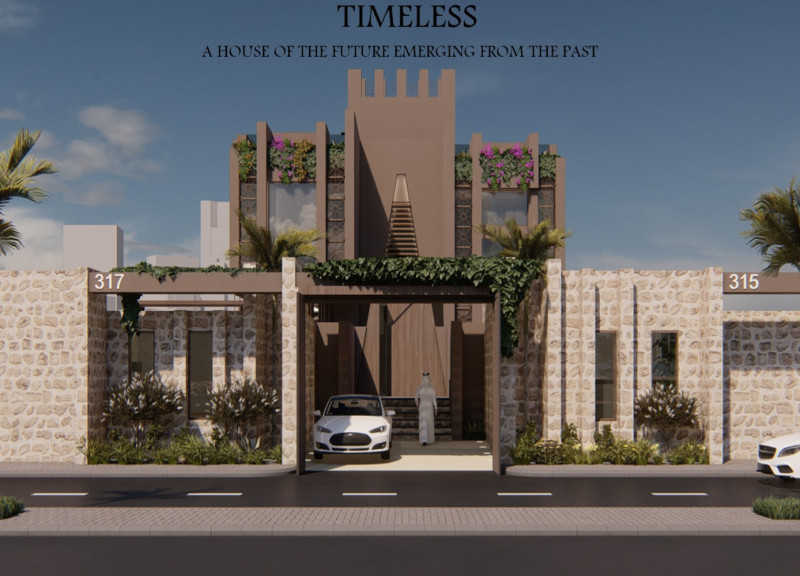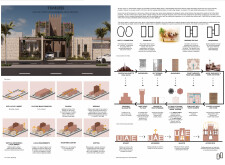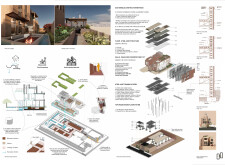5 key facts about this project
### Overview
Located in the United Arab Emirates, the project integrates traditional Emirati architectural principles with contemporary design solutions, addressing the region's unique climatic and cultural context. The intent is to create a residence that reflects historical influences while meeting the requirements of modern living through sustainable practices.
### Spatial Organization
The layout of the residence is designed to optimize both social interaction and privacy. Central living areas, including the living room and dining space, are strategically located to encourage communal activities. Private sleeping quarters are positioned to ensure seclusion without sacrificing accessibility. Workspaces, including a study and home office, are integrated into the design, promoting a balance between personal and professional needs. The circulation design enhances navigability while facilitating natural light and airflow, contributing to the overall comfort of the interior environment.
### Material Selection and Sustainability
The project employs a diverse range of materials that align with both aesthetic and environmental goals. Key materials include adobe façade plaster for thermal insulation, recycled composite decking to minimize ecological impact, and photovoltaic glass that generates energy from sunlight. Additional features such as gypsum wall finishes provide durability and refined aesthetics, while steel joists offer structural support without compromising open spatial configurations. Traditional elements, such as plaster and stone, enhance the building's connection to its heritage.
Sustainability is embedded in the project's framework through rainwater harvesting systems that efficiently manage water resources, as well as the integration of solar power via photovoltaic cells. Natural cooling techniques, including wind towers and mashrabiyaa, exemplify the adaptation of historical methods to contemporary needs, ensuring energy efficiency and comfort in the desert climate. Features such as skylights with retractable canopies and vertical gardens further enhance the sustainability aspect by promoting natural lighting and biodiversity within the living environment.






















































